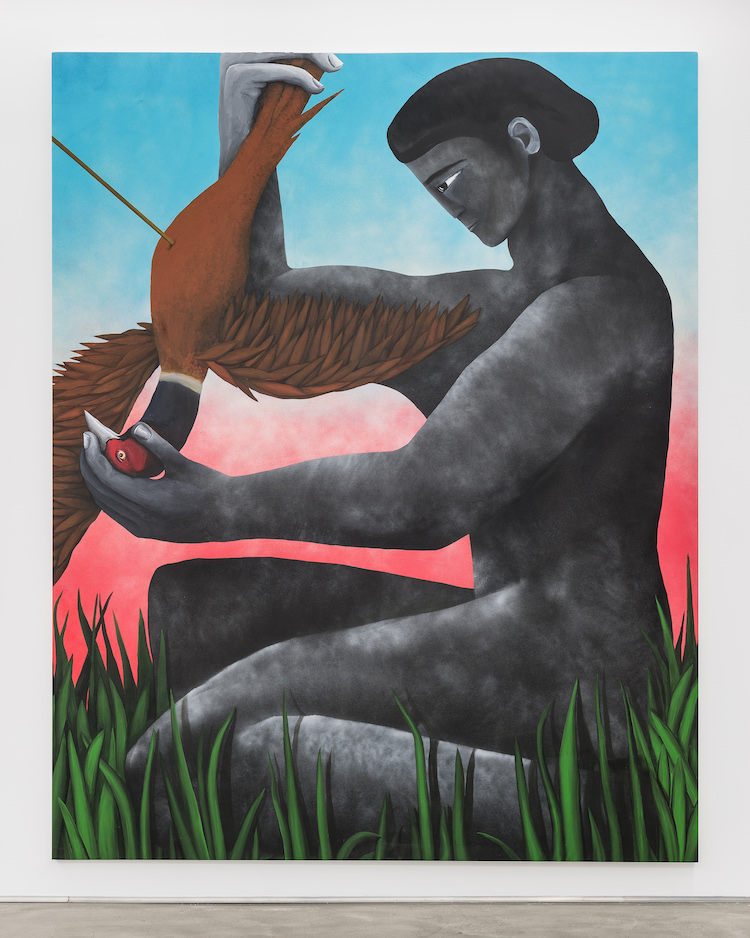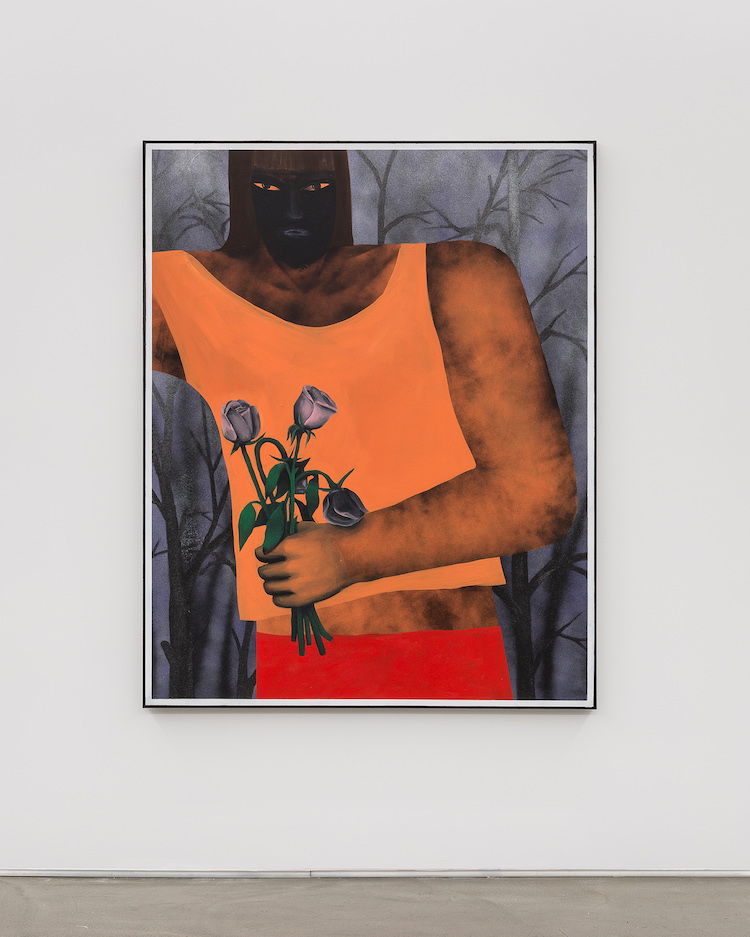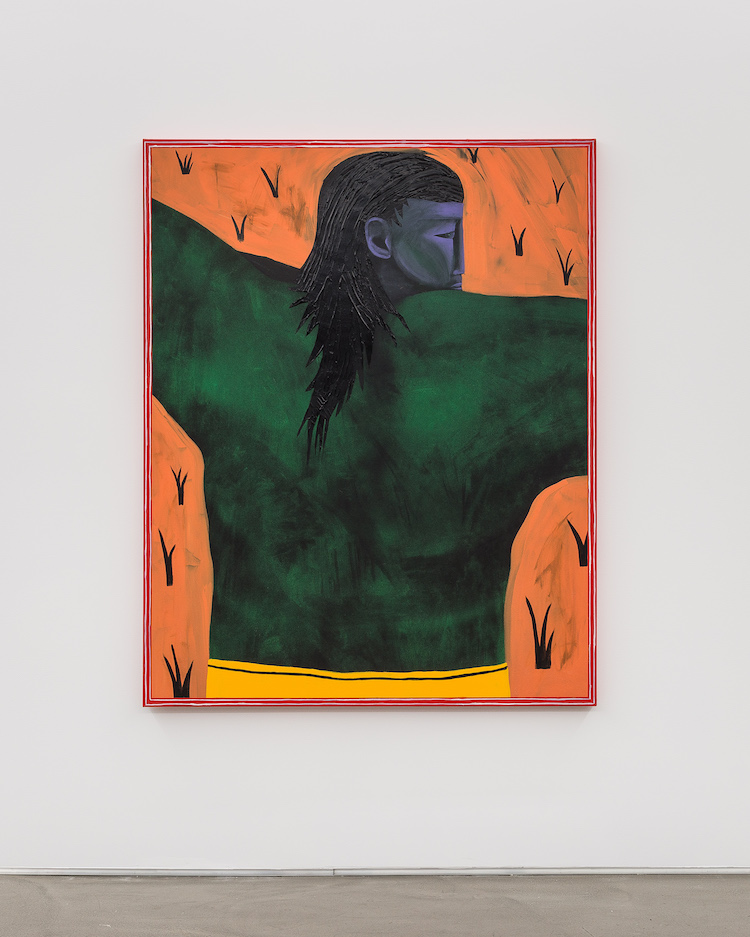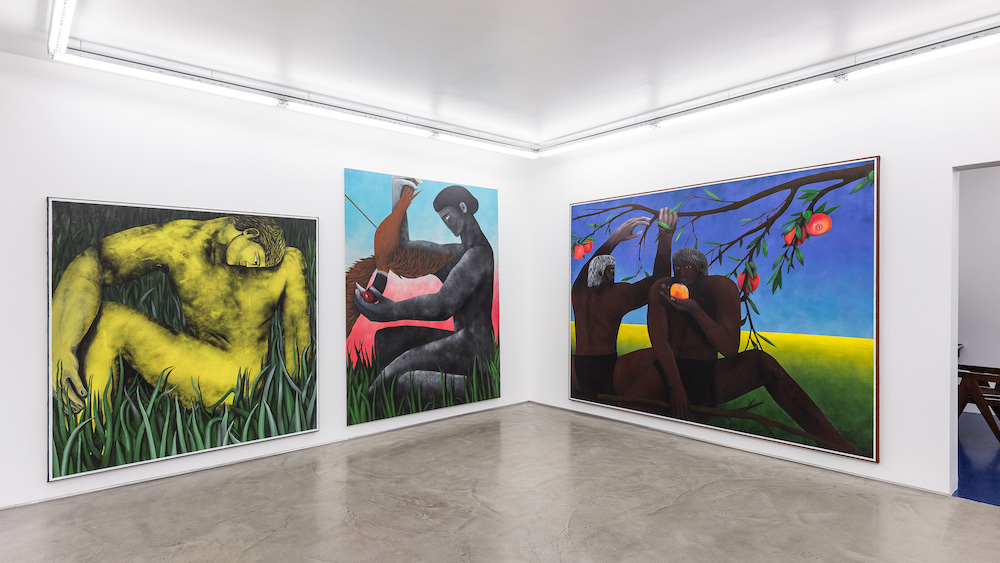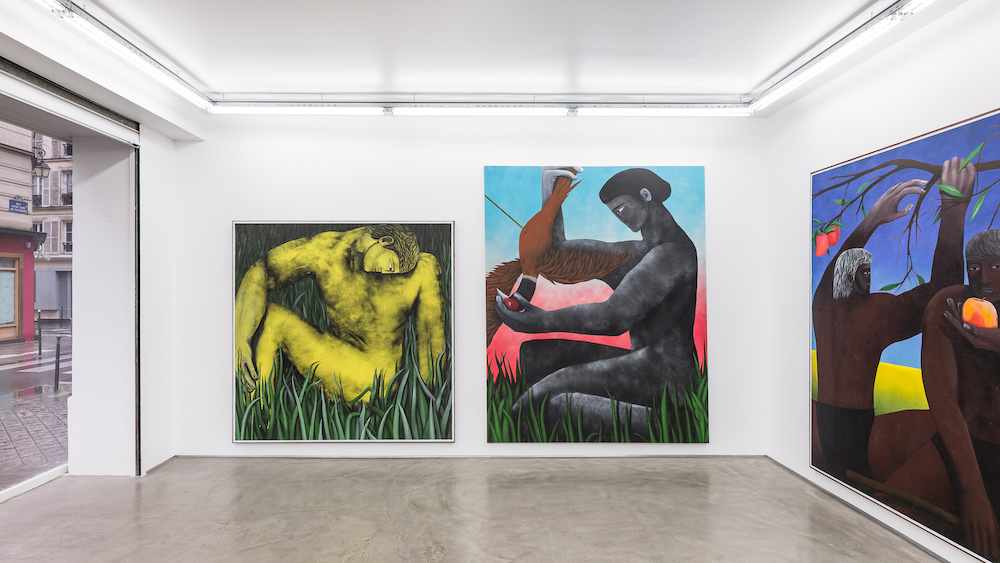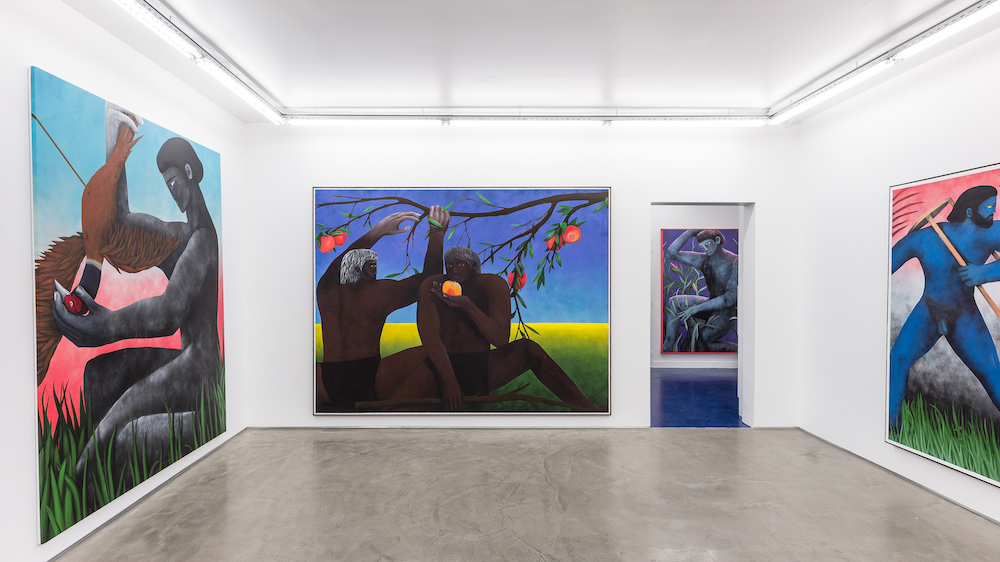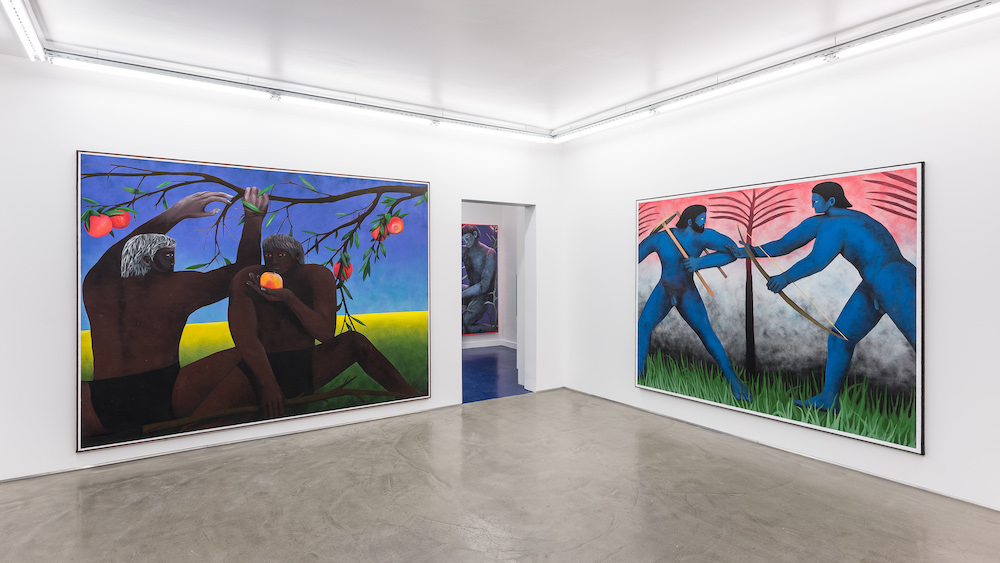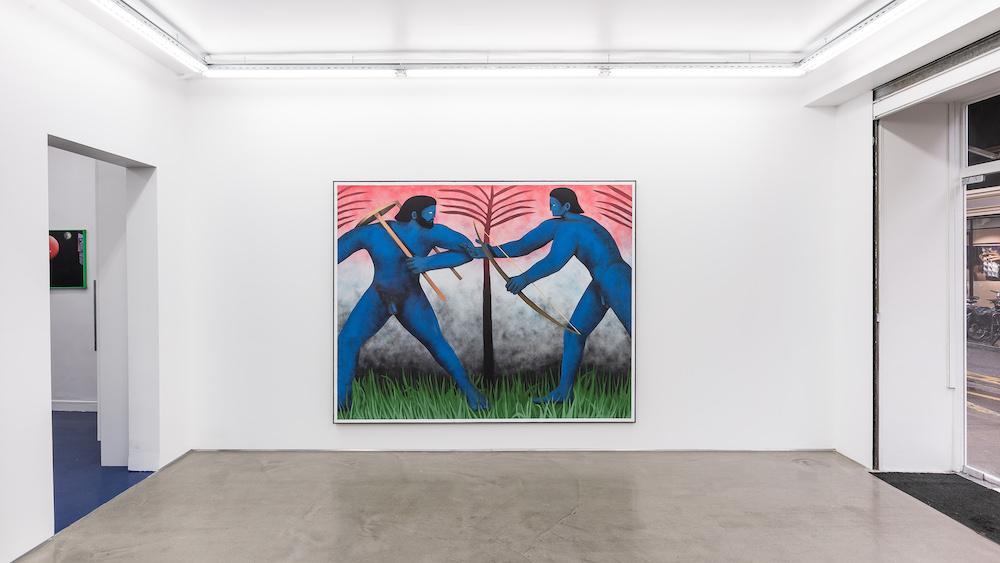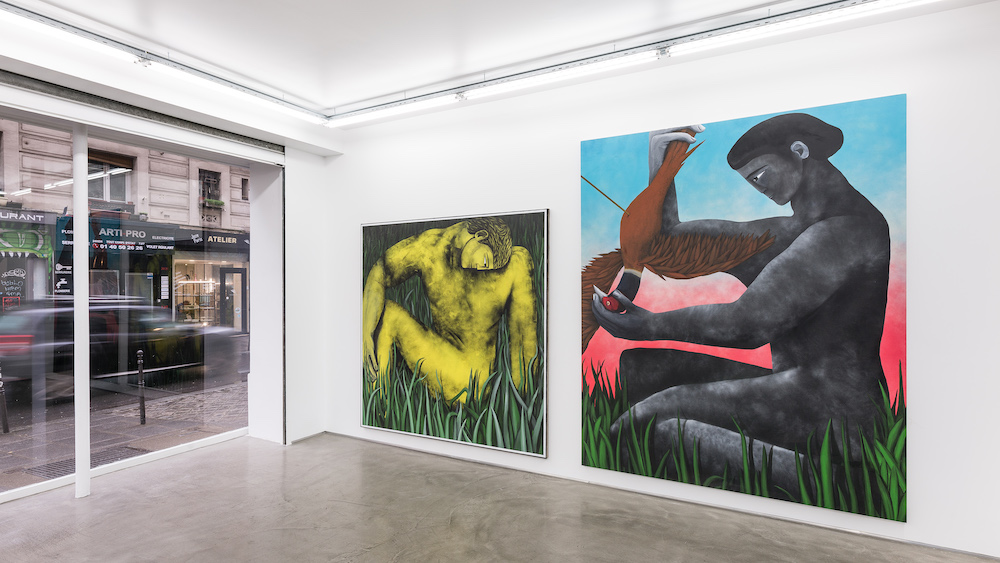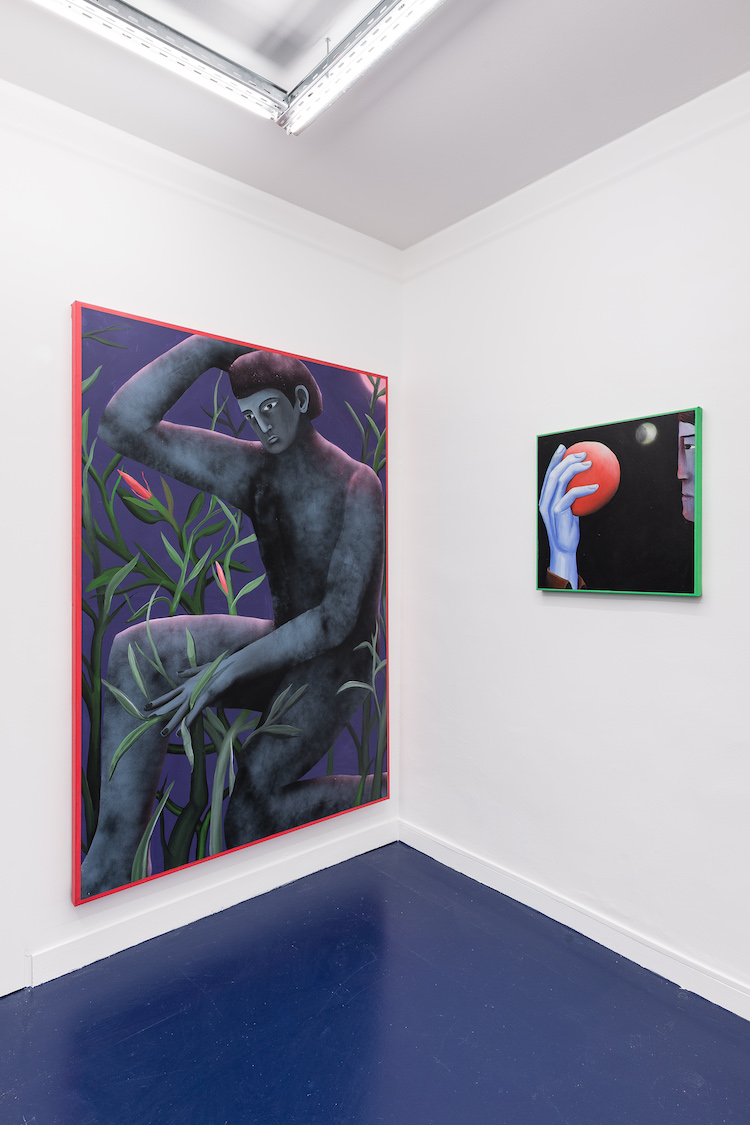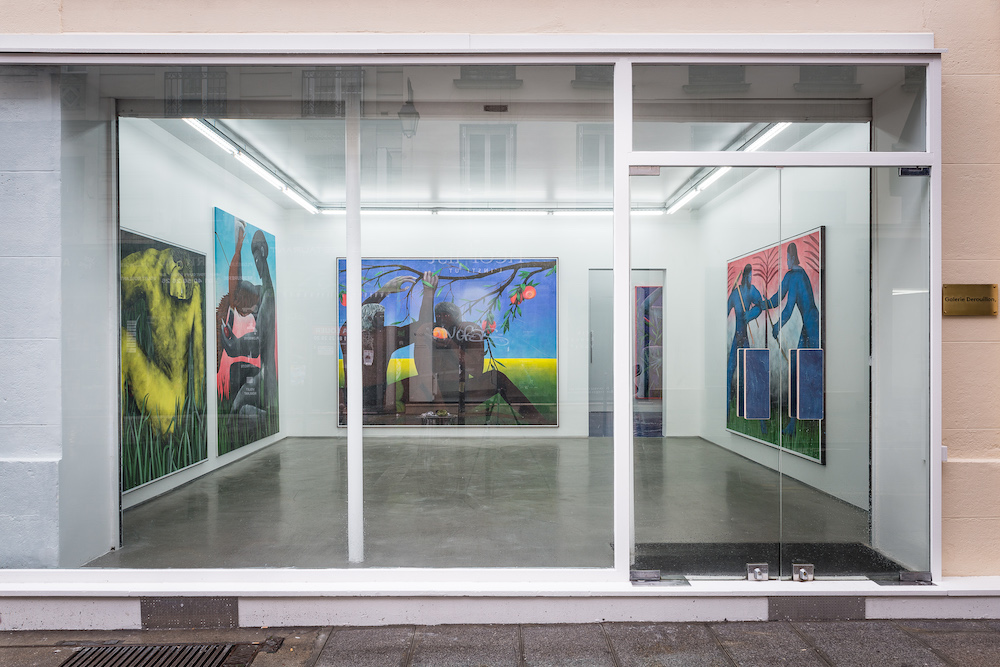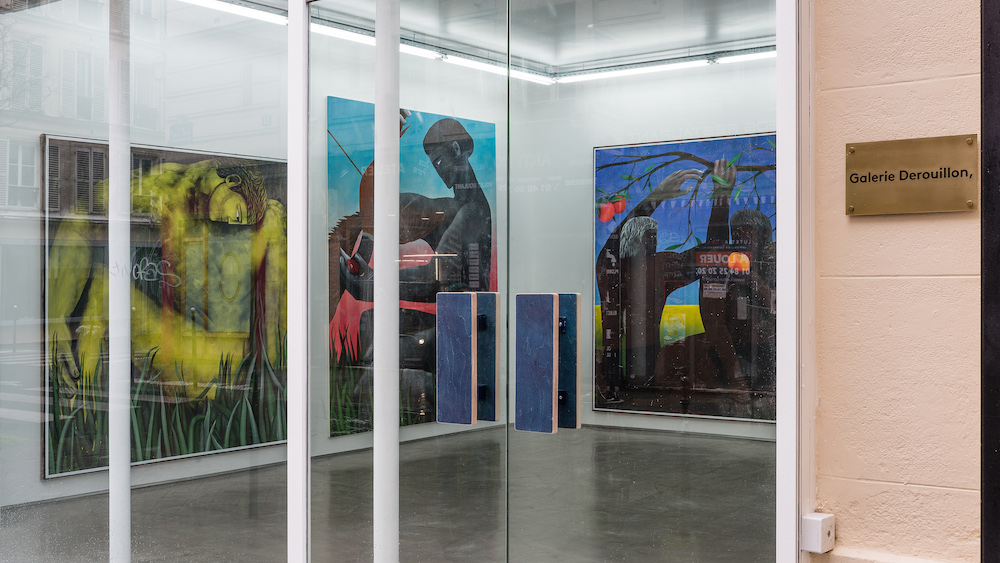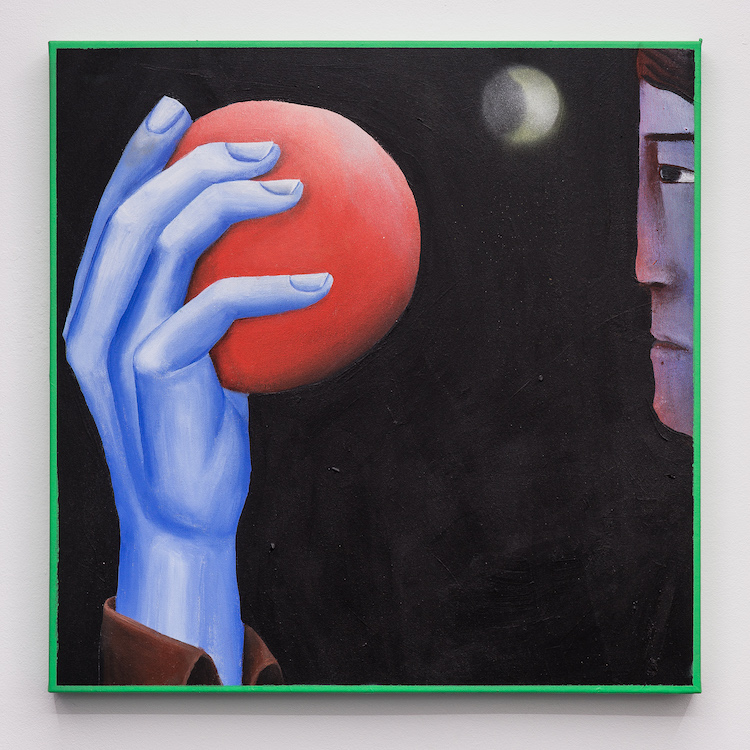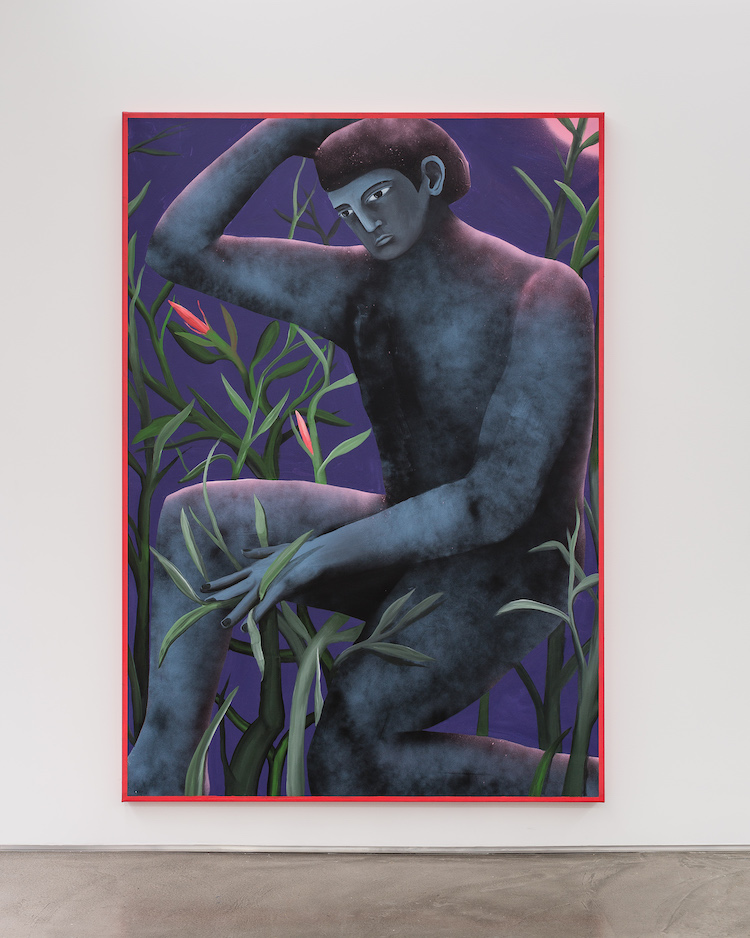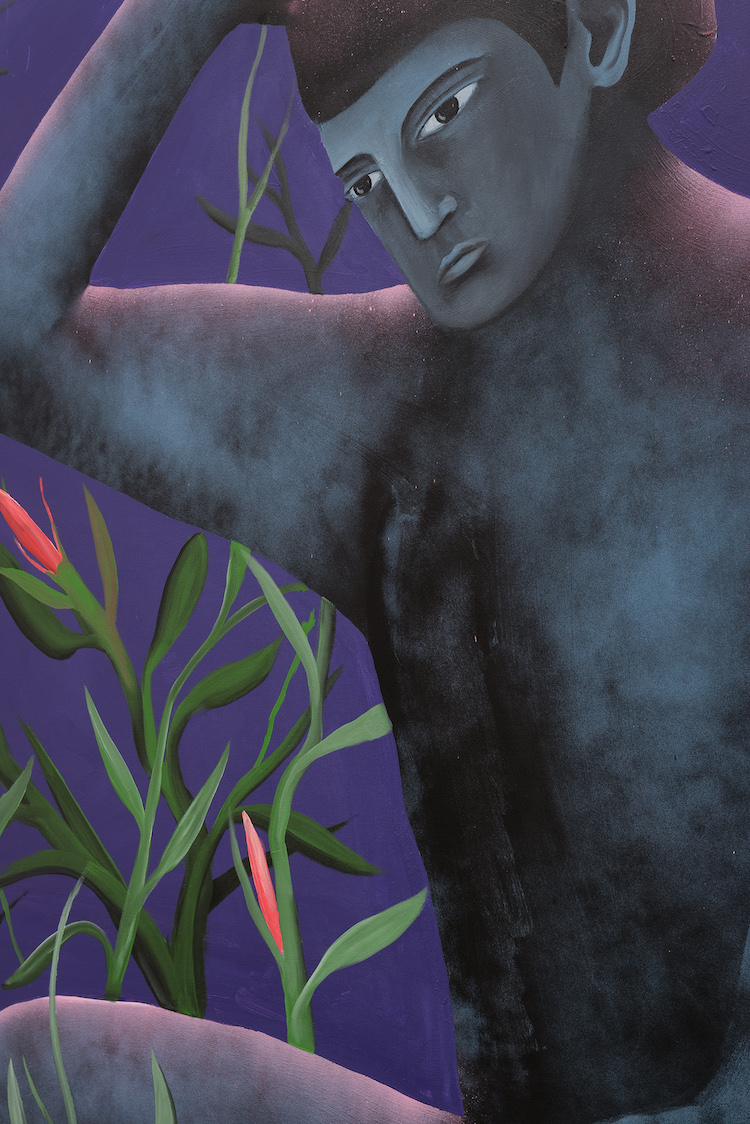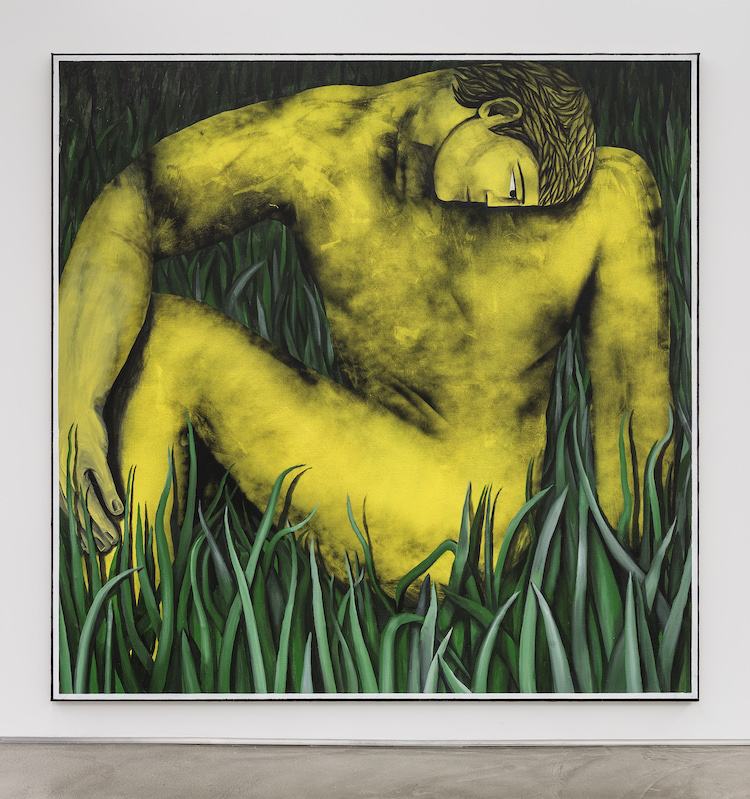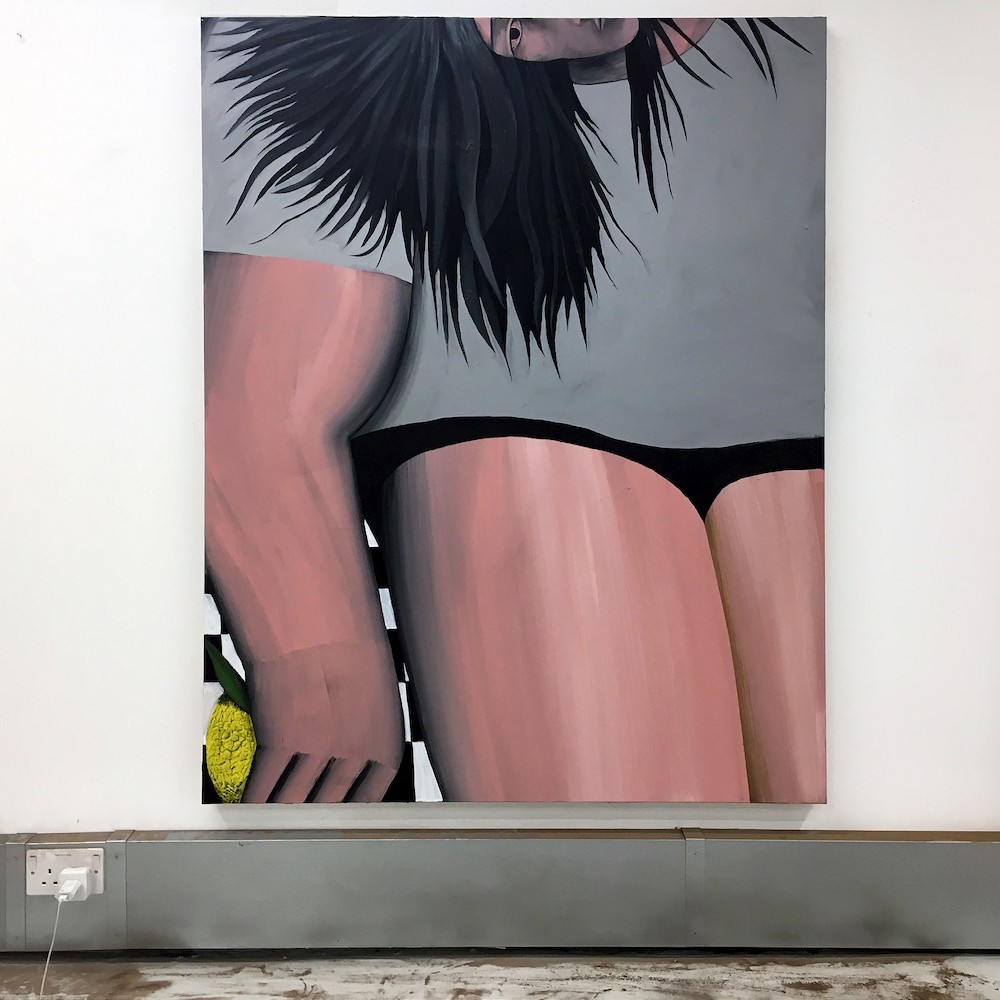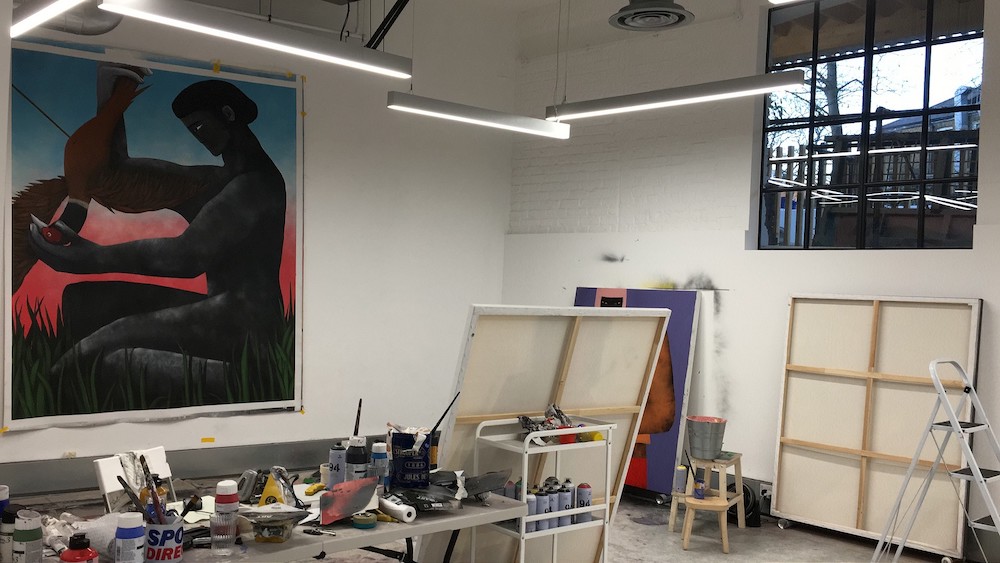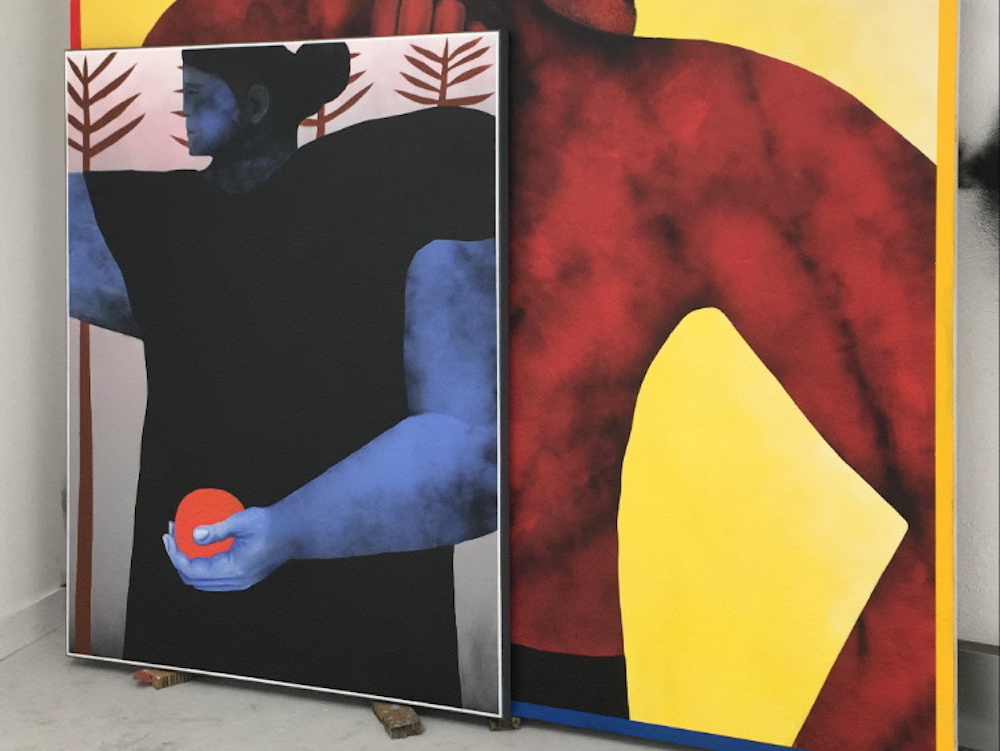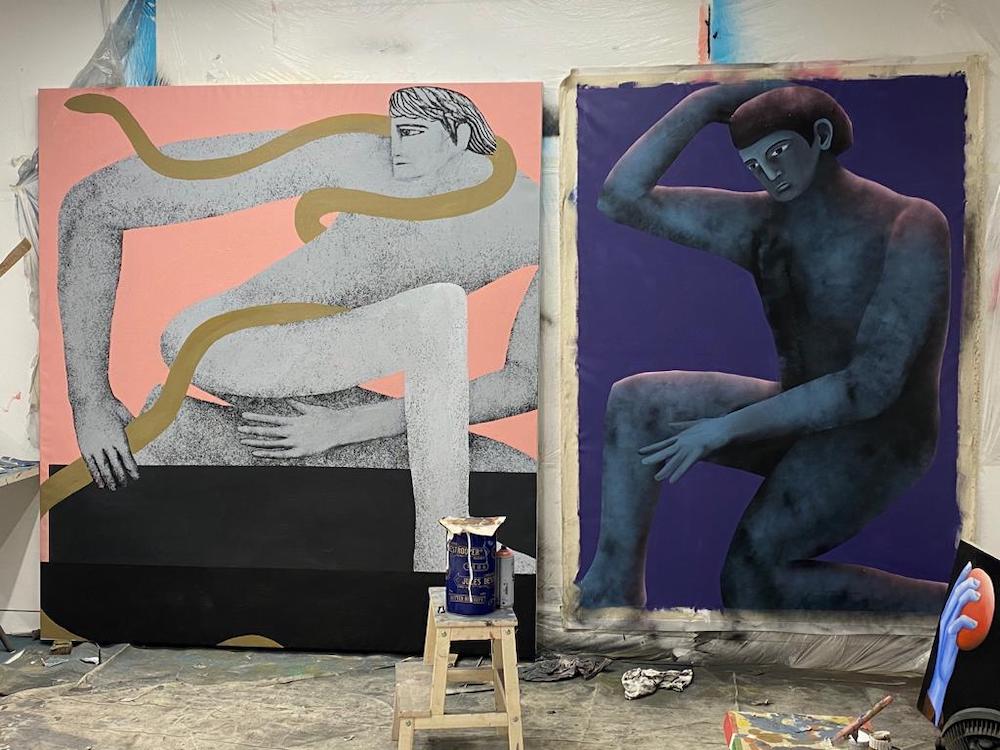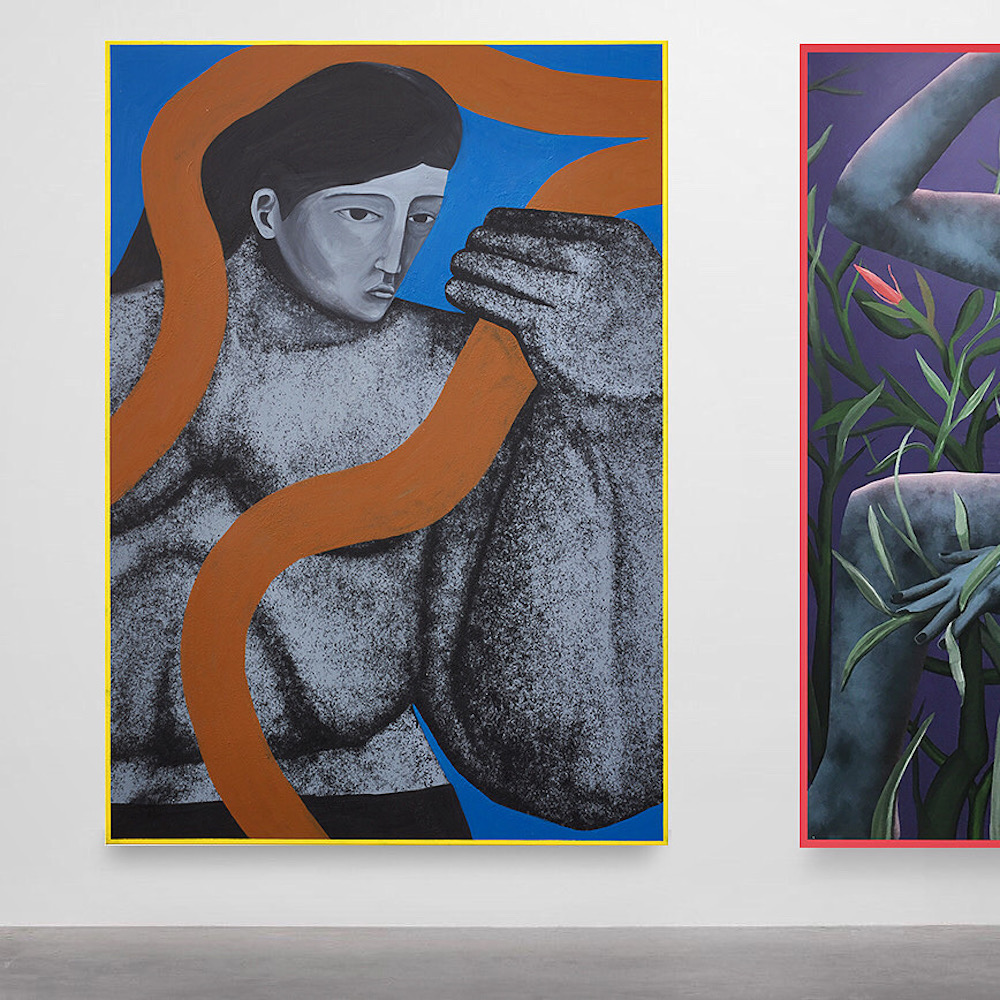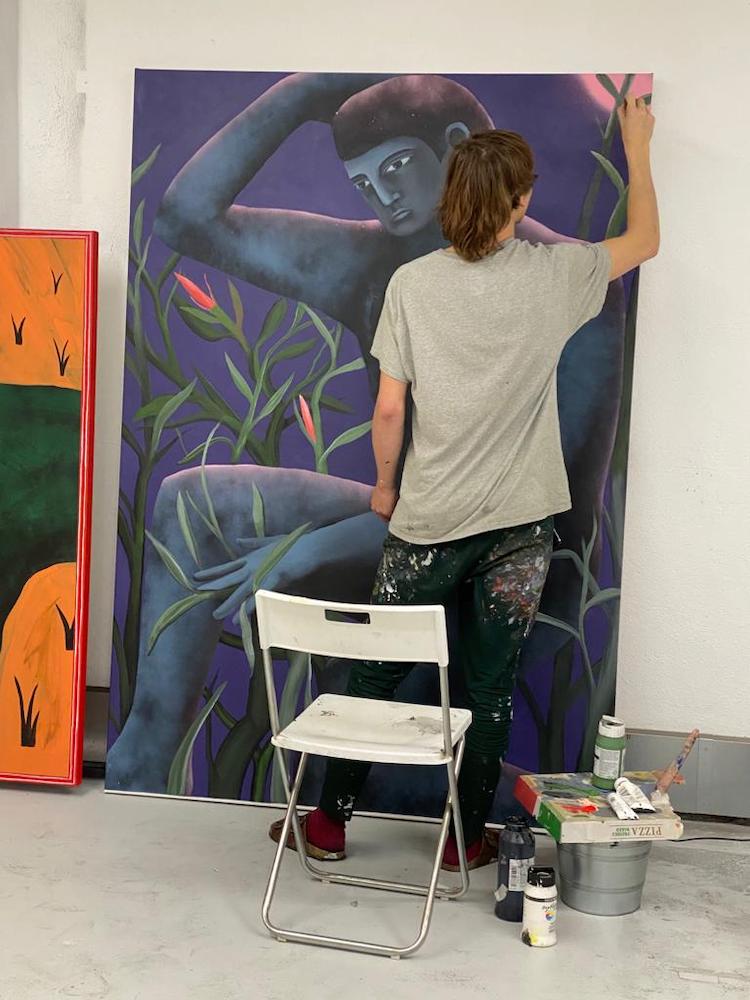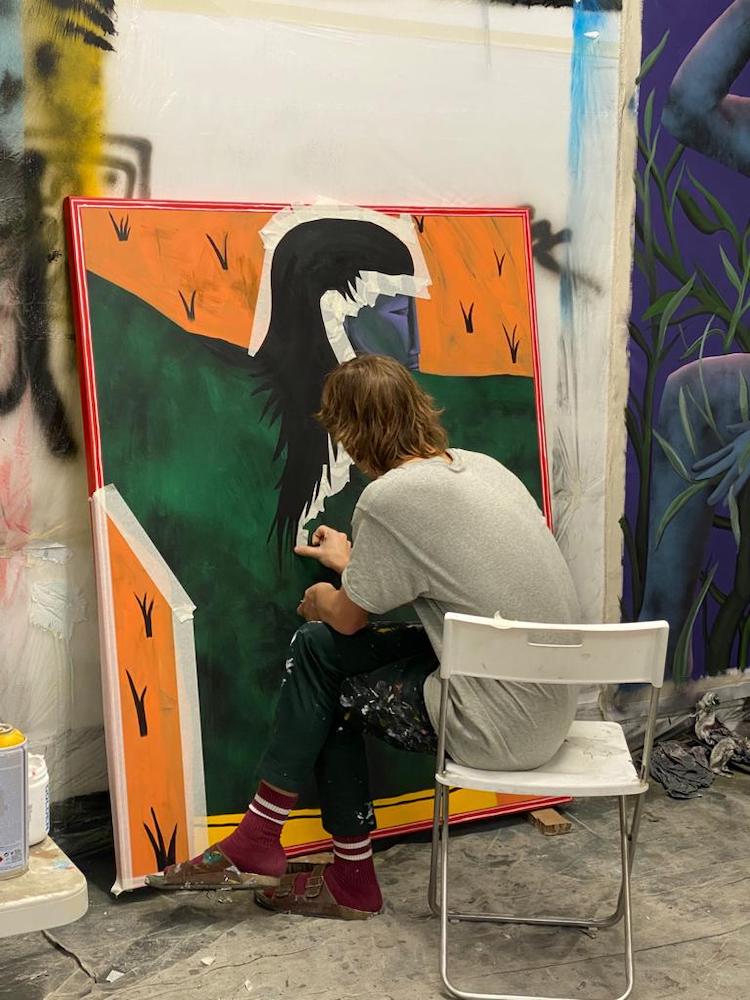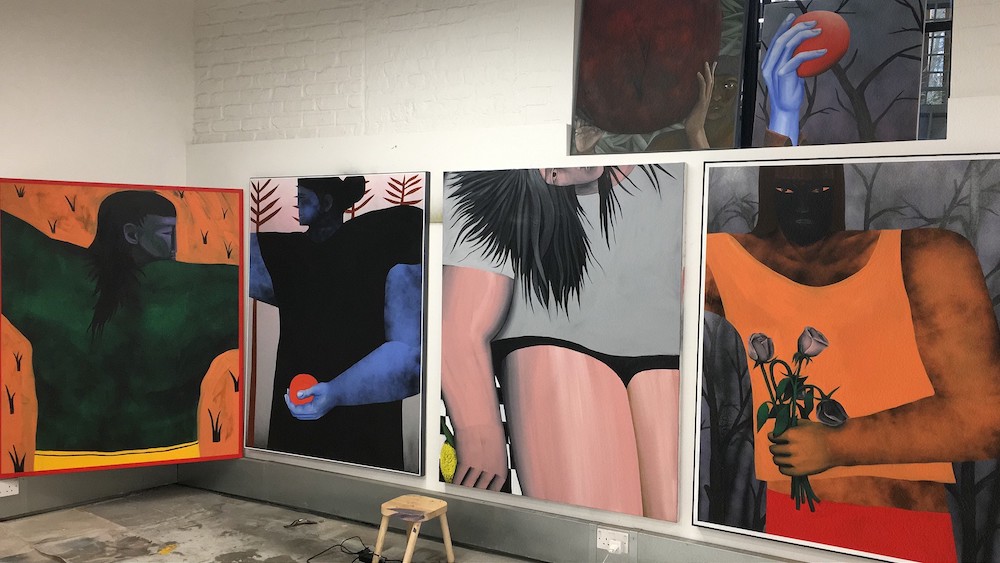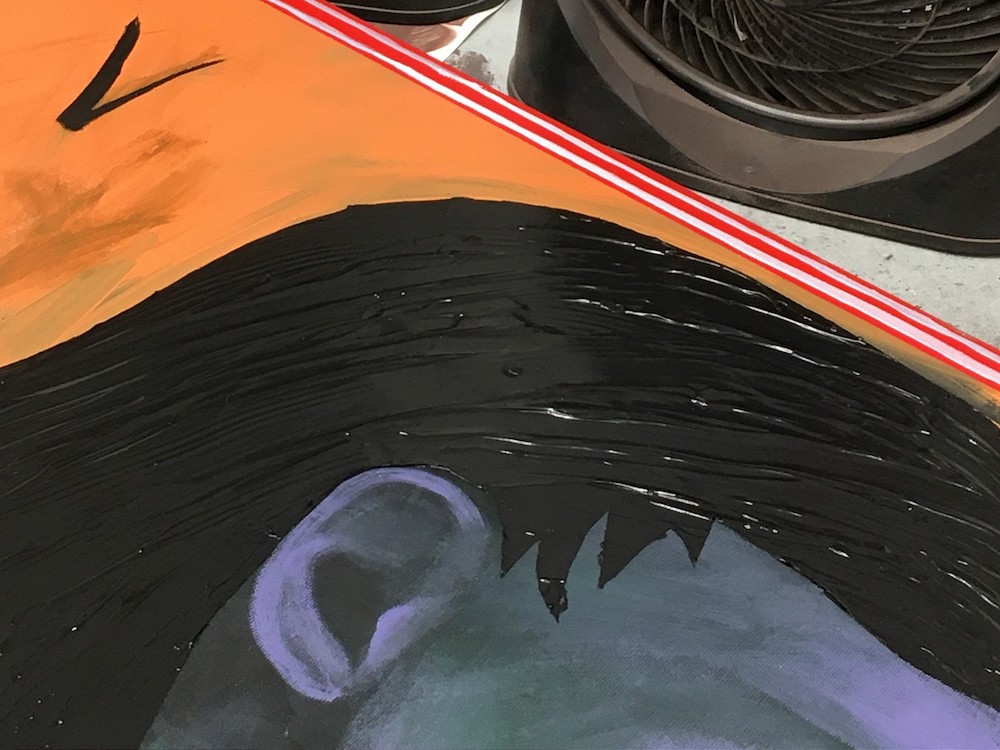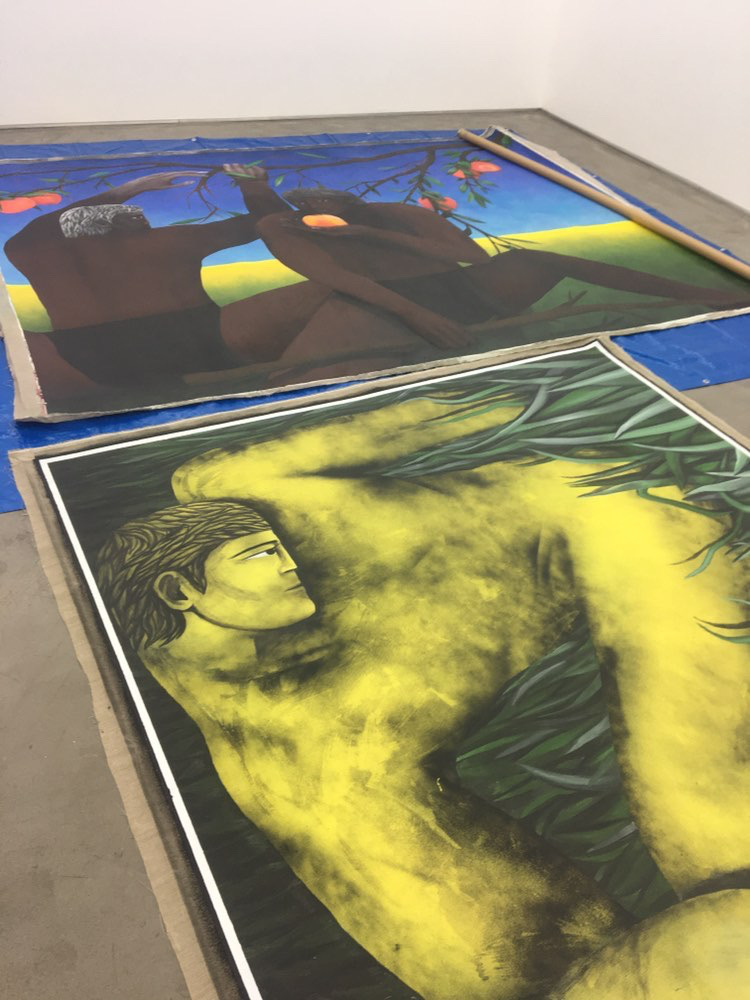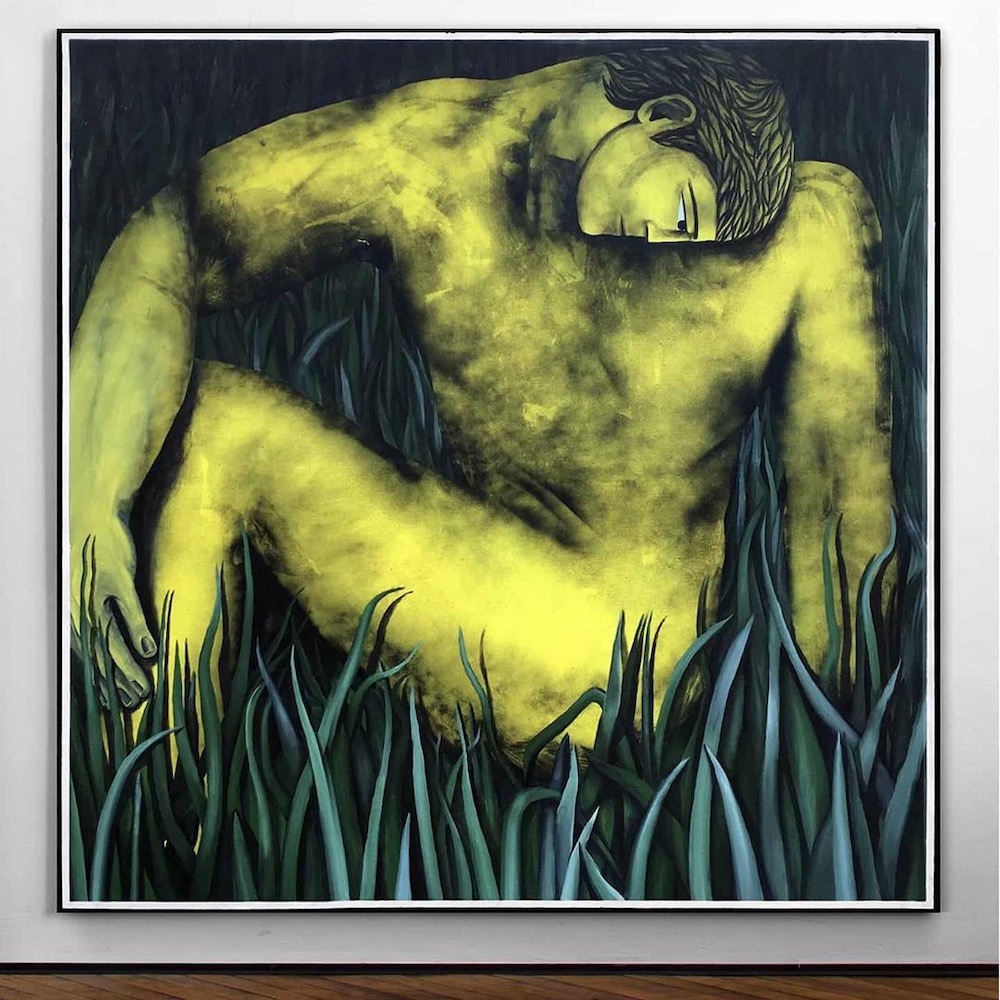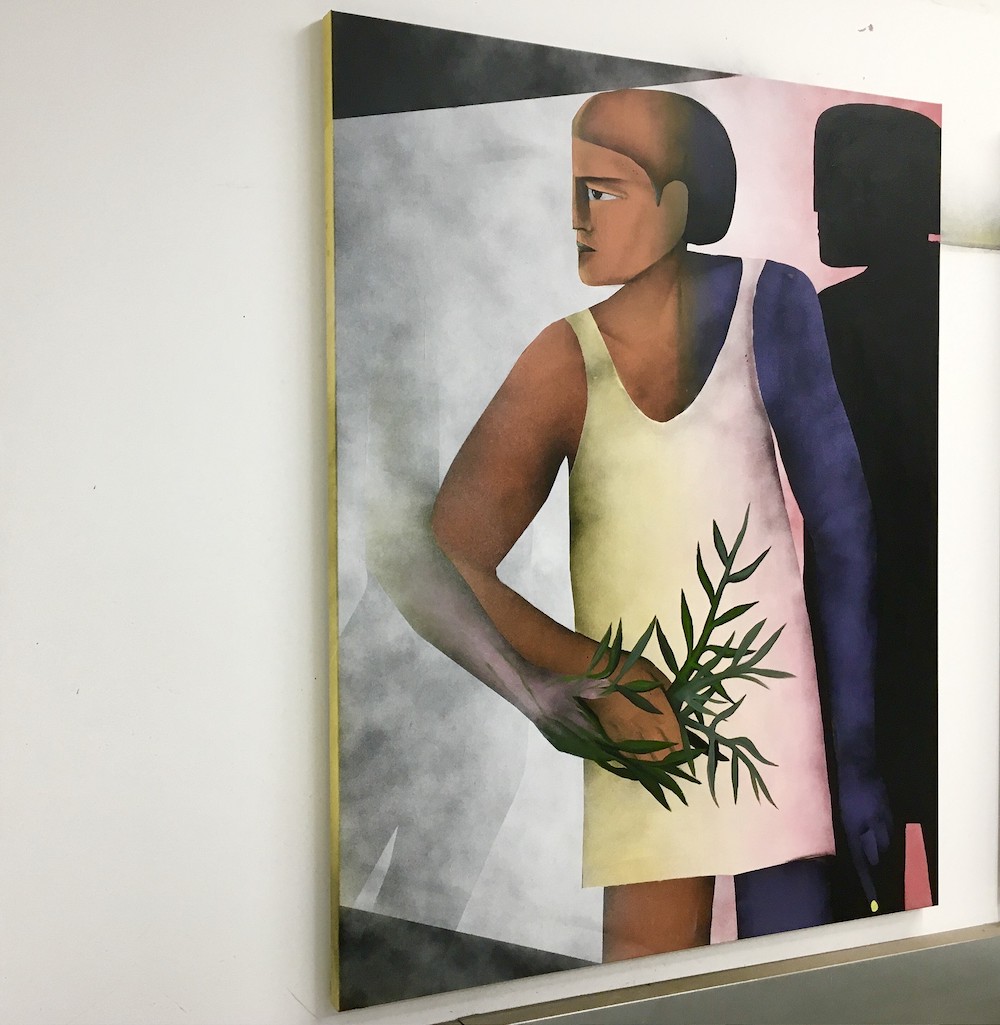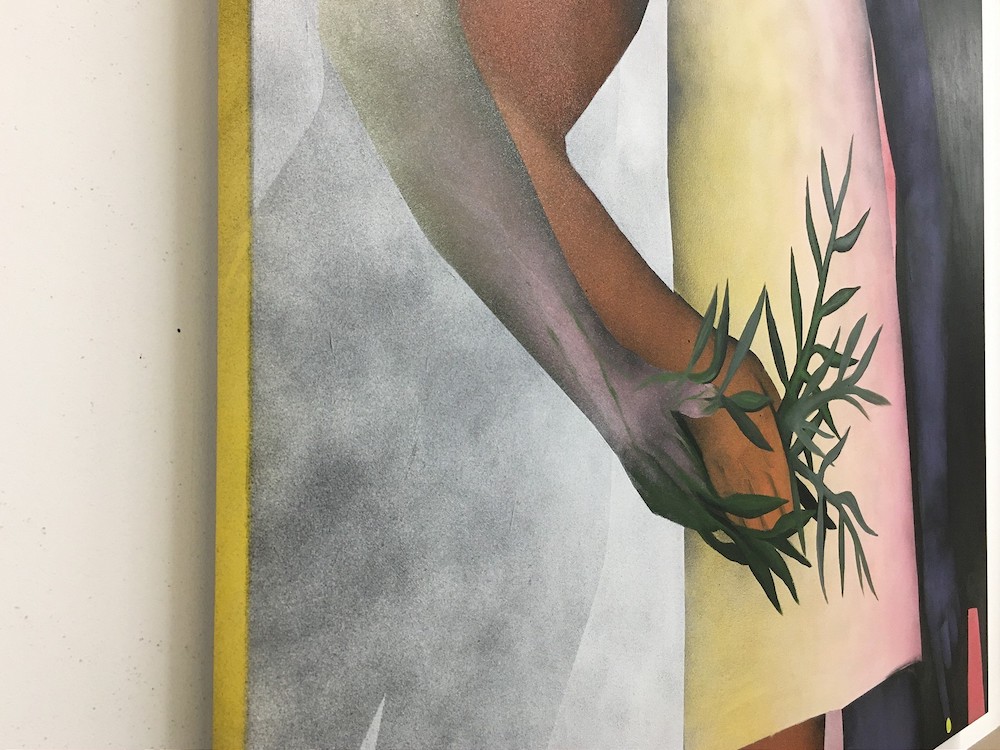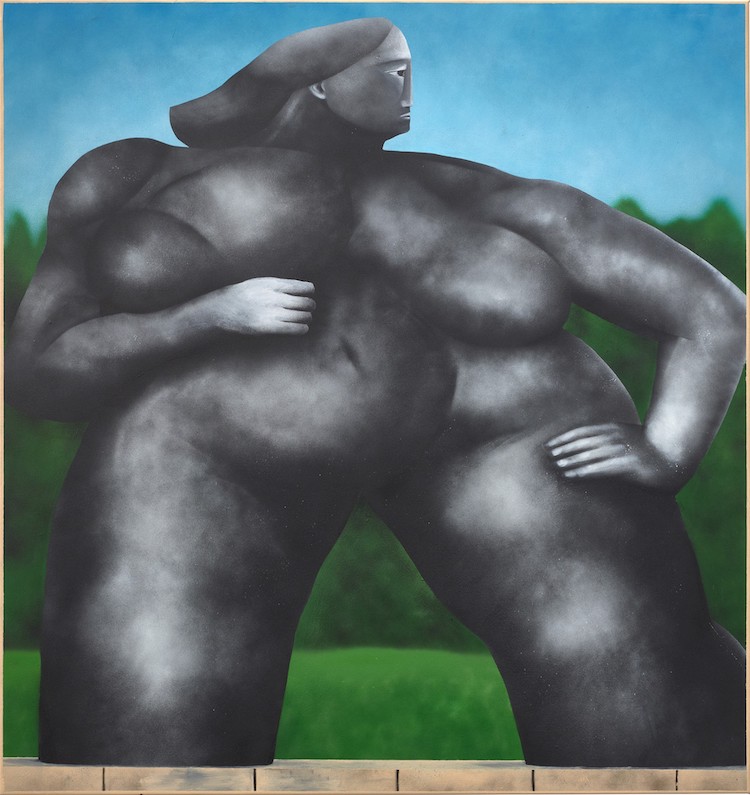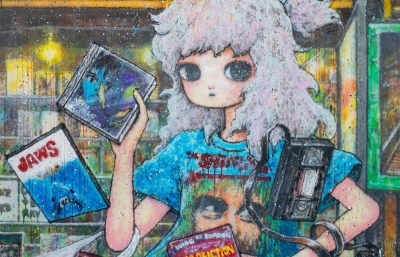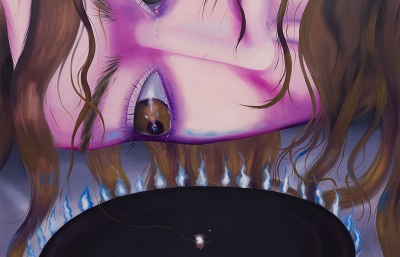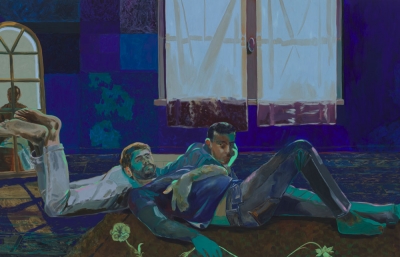The mighty mammals and mythological figures who hulk through the practice of Czech artist Vojtěch Kovařík have been a fascinating story. The combination of large, forceful compositions on tortuous surface results in impactful paintings that evoke the strength of sculpture. Herculean figures strain within the format, seemingly breaking out of the hulking frames, brandishing mighty slabs of flesh and muscle. With strong focus on the rendition of the surfaces and purposeful exaggeration of human anatomy, the work resonates with irresistible honesty and naïveté, sometimes questioning the traditional notion of physical strength and power.
We got in touch with Vojtěch Kovařík just a couple of days before the big opening of his Parisian debut at Galerie Derouillon and talked about his latest body of work, his interest in mythological figures, their relationship with contemporary popular culture, and the development of his technique and visual language.

Sasha Bogojev: Where do these grandiose figures come from?
Vojtěch Kovařík: I have always created large works with figural themes, and now more descriptive and authentic than the ones I developed almost three years ago. It all came naturally by exploring various painting possibilities.
What do they represent to you?
Not long ago, I painted heroes and mixed them with celebrities. I was merely pointing out the irony of how easily we perceive today's hero profile. Now I paint more consciously and less ironically, using mainly Greek heroes or mythology to describe the emotions or compositions I have in my head. A lot of my paintings are named after the gods of Greek mythology.
Why do you make them so large, as if cramped inside the canvas?
I usually compose large paintings because I feel it's more sincere and more natural. Most often I use square formats, which paradoxically, are the most demanding in the composition. But with some distortion, it still creates new possibilities that I would probably not discover with the more established dimensions of the image. It's always a challenge, sometimes a struggle.
I make heroes on a supra-human scale because they are powerful heroes and gods. The people who lived for the gods died with them. I have respect for heroes and gods and in my work, and try to reflect on and give life to old heroes who transform into new forms. The fact they are often just cutouts or cramped bodies around the perimeter of the frame reinforces my belief that this gives them more emotions and depth, immortality, and fragility, or even coarseness and softness.
How do you feel about scaling down your work?
For me, these are just right, natural formants that, paradoxically, I can paint much better than smaller or medium size. Now I'm going to formats larger than three meters, and they are physically demanding. A few of them will be hanging at my solo show at the L21 Gallery in May.
Where do you find inspiration for your work, and how does that inform how you paint?
For the permanent inspiration or work that I can enjoy every day, I return to previous generations, from postwar art, old masters and antiquity, to the beginnings of art. I am also very inspired by the period of Brutalism, Soviet statues and posters. I also get inspiration from books about Greek culture.
Your figures have an ambiguous feel on many levels. Is that intentional and why do you paint them that way?
I like to work with a strong and already processed object, but I feel it is not good to define it absolutely. Because if you ignore it a little bit, then painting offers more questions and hides something more mysterious. Sometimes it happens to me that the image follows a very original theme, which is then too flat and insufficient. Also, sometimes the painting is repainted, then another created during the last brush strokes. I like limitlessness and ambiguity, layering and repainting–and that's why I love the whole process.

How do you achieve such particular surfaces, and when did you start painting that way?
I've been using this technique for two years, but I'm still trying to improve it. I try various methods using spray and acrylic mediums, and also make my own spatulas and work with sand in some layers. But I am most proud of the handmade sprayer, which sprinkles paint to create different structures. The combination of all this creates a much more structural painting that resembles the patina of a statue. This is actually what I try to achieve in my work, a more sculptural feeling.
Have you ever made sculptures or do you have any plans of doing that in the future?
I studied ceramics at the Secondary School of Applied Arts in Uherske Hradiste, so I have already made some sculptures, but it's not something I want to go back to. The most important thing for me is that I learned the technique. Now I plan to go back to ceramics and start working on some ceramic sculptures soon.
How long do you plan to move in this direction? Is there any other body of work you would like to develop?
Not until I exhaust Greek antiquity, which I may be doing all my life, haha. I am definitely now more focused on methods, working with the surface, the relationship of colors, and I'm starting to work more with space in pictures.
What type of presentations do you have lined up in the coming few months?
I have a pleasantly busy schedule until the end of the year. I will have the first solo exhibition in the Derouillon Gallery in Paris, opening on February 27, 2020. At the end of April, I have a solo show at Chemistry Gallery in Prague and another solo show in May at the L21 Gallery in Mallorca. I also got a residency in L.A. in June, and so on.


